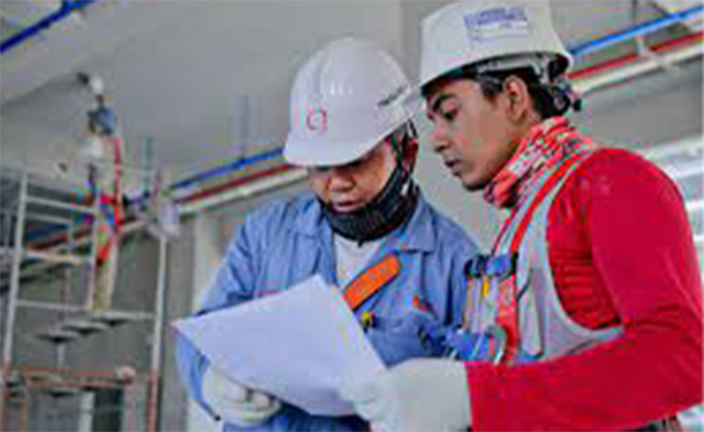What is the Difference Between Job Training and Workforce Development?
Posted by Laura Amendola on April 18, 2024
Training and developing your employees is vital to the success of your business. The question is, what kind of upskilling do your employees need? Should you provide workforce development or job training? What exactly is the difference?
Some websites and even some experts use these terms as though they’re interchangeable. However, workforce development and job training actually describe two parts of the upskilling process. Your employees will likely need both over the course of their career, which means you should provide both. It’s important that you choose the right one at the right time, however.

What is job training?
Job training is upskilling or training that focuses on a specific skill or skill set needed to perform the job. Teaching an employee to navigate the software your company uses could be an example of job training. Often this happens during onboarding, as the employee builds the necessary skills to perform their everyday tasks. The employee must learn these skills in order to meet the demands of their position, making this a necessary step to focus on at the beginning of your employee’s tenure at your company.
Job training may be delivered by coworkers, managers or third-party training partners, but you as the employer should ensure there is a plan in place for job training, even if that plan is delegated to members of your team. Employees can learn on the job, by sitting in a classroom, or through mobile-enabled online learning. The most flexible of these is online learning, which allows employees to study when and where they have time.
Read more: How Digital Upskilling Can Prepare Workers for Automation
What is workforce development?
The definition of workforce development changes based on your perspective. Governments, schools, and businesses all use this term to mean something slightly different. The common denominator is that workforce development improves worker skills to enable long-term success.
For business leaders, workforce development is an upskilling plan that will support success now and into the future. It gives each employee the competencies they need to help the business achieve its goals. Workforce development differs from job training by taking a longer view. It focuses not on what the employee needs to know now, but how they can grow and develop over time to contribute even more within the business. While job training is complete when employees prove competency in particular areas, workforce development is ongoing.
Job skills can be a part of workforce development, but employees may also need training in culture, management skills, leadership competencies, professionalism, and customer or client service among other topics. Each of these subject areas prepares employees to take on more responsibility within your organization.
Some workforce development initiatives, like culture training, might be mandatory while others, like management skills, might be optional. Providing online, on-demand workforce development opportunities allows employees to opt-in to training opportunities that best fit their career goals. Workforce development is not a one-size-fits-all solution. Development opportunities should be customized to meet the goals of the individual employee as well as the goals of the business.
Read more: The ROI of Workforce Development
Why you need both job training and workforce development
Every business needs both job training and workforce development. However, individual employees will need each one at different times. New hires, the newly promoted, and employees affected by changes in management, technology or responsibilities likely need job training first. All other employees can benefit from workforce development to build their skills and prepare them for future responsibilities or roles.
Job training brings an immediate and obvious benefit: skilled employees. The benefits of workforce development materializes over a longer timeline, but it does add real value for your business and its employees. Here are just a few ways workforce development can work for your business:
- Attracts talent: According to Pew Research Center, 63% of workers left their jobs due to a lack of career advancement opportunities. Those in the workforce are no longer interested in stagnant employment, but instead value the potential for promotion and growth.
- Improves retention: Workers who get those career growth and development opportunities are likely to stay employed with your business longer, since they don’t have to look outside it for ways to advance their career.
- Strengthens talent pipelines: With an effective workforce development plan in place, you’re able to quickly fill open positions with trained and qualified workers because you’ve been preparing those workers internally for months or years.
Read more: 10 Workforce Trends to Expect in 2024
You can implement workforce development strategies independently within your business, or you can partner with other businesses and organizations to develop your shared workforce. Industry representatives and government organizations may promote various workforce development initiatives with the goal of improving the skill level of all workers in a given industry.
As a business owner, you can learn from and partner with these outside agencies, but you shouldn’t rely on them to do all the work. While general workforce development initiatives can have a positive impact on the industry as a whole, only you know what’s best for your specific business and its workers. The important thing is to identify your goals and then create workforce development strategies that work toward them.
If you want to learn more and partner with an organization to provide professional workplace development for your employees, reach out to our training experts for more information.